Is a caracal cat a suitable pet? Absolutely not. While the allure of owning an exotic animal might be tempting, keeping a caracal as a pet is generally a bad idea, ethically questionable, and potentially illegal. PETS.EDU.VN is here to guide you towards making responsible and informed decisions about pet ownership. Opting for domesticated breeds is a much better choice for companionship and conservation.
Let’s explore why caracals are best admired in their natural habitat and how you can find the perfect feline companion with the right temperament and care requirements through resources at PETS.EDU.VN. Discover alternative domestic cat breeds, ethical considerations, and the legal aspects of exotic pet ownership with us.
1. Understanding The Caracal: A Wild Cat, Not A House Cat
The caracal (Caracal caracal), often referred to as the desert lynx, is a wild cat species native to Africa, the Middle East, Central Asia, and India. These beautiful animals are known for their distinctive black ear tufts, powerful build, and striking appearance. While they may look similar to domestic cats, their behavior, needs, and instincts are vastly different.
- Physical Characteristics: Caracals are medium-sized cats, weighing between 20 to 40 pounds. They have long legs, a short, dense coat that ranges in color from reddish-brown to sandy, and prominent ear tufts that can reach up to two inches in length.
- Natural Habitat: Caracals thrive in a variety of habitats, including savannas, woodlands, and scrublands. They are solitary animals, primarily active during the night, and are skilled hunters.
- Diet: In the wild, caracals prey on a variety of animals, including birds, rodents, hares, and small antelopes. Their diet is entirely carnivorous and requires a high level of protein and nutrients.
2. The Cat Family Tree: Where Do Caracals Fit In?
To understand why caracals are not suitable pets, it’s helpful to look at their place in the cat family. All cats, both wild and domestic, belong to the Felidae family. This family is divided into two subfamilies: Pantherinae and Felinae.
- Pantherinae: This subfamily includes the “big cats” like lions, tigers, jaguars, and leopards. These cats are known for their ability to roar, a trait that is absent in the Felinae subfamily.
- Felinae: This subfamily includes smaller wild cats, as well as domestic cats. Some common members include the African wildcat, bobcat, cougar, and caracal. Members of this subfamily can purr but cannot roar.
Domestic cats (Felis catus) are believed to have evolved from the African wildcat (Felis lybica) thousands of years ago. Through selective breeding, domestic cats have been adapted to live alongside humans, developing traits such as sociability, adaptability, and reduced aggression. Caracals, on the other hand, remain wild animals with their natural instincts intact.
3. Why Caracals Don’t Make Good Pets: A Reality Check
Despite their captivating appearance, caracals are not suitable pets. Here are several reasons why:
3.1. Wild Instincts and Unpredictable Behavior
Caracals retain their wild instincts, even when raised in captivity. They are territorial, independent, and can be aggressive, especially when they feel threatened or confined. According to a report by ABC News, exotic cats, including caracals, have been known to exhibit aggressive behavior towards humans, causing serious injuries.
- Territoriality: Caracals are highly territorial animals. They mark their territory by spraying urine and scratching, behaviors that can be destructive and unpleasant in a domestic setting.
- Hunting Instincts: Caracals have strong hunting instincts and may prey on smaller pets, such as cats, dogs, and birds. They are also capable of inflicting serious injuries on humans, especially children and the elderly.
- Unpredictability: Even caracals that appear tame can exhibit unpredictable behavior. They may become aggressive without warning, especially if they are stressed, frightened, or feel threatened.
3.2. Specialized Care Requirements
Caracals have specialized care requirements that are difficult and expensive to meet in a domestic setting.
- Diet: Caracals require a diet that is high in protein and taurine, which can be costly and difficult to source. In the wild, they eat a variety of prey animals, including birds, rodents, and small mammals. Replicating this diet in captivity can be challenging.
- Enclosure: Caracals need a large, secure enclosure that allows them to exercise their natural behaviors, such as climbing, jumping, and hunting. These enclosures can be expensive to build and maintain.
- Veterinary Care: Finding a veterinarian who is experienced in treating exotic cats can be difficult. Caracals require specialized veterinary care, including vaccinations, parasite control, and treatment for injuries and illnesses.
3.3. Ethical Considerations
Keeping a caracal as a pet raises significant ethical concerns.
- Animal Welfare: Caracals are wild animals that are adapted to live in their natural habitat. Confining them to a domestic environment can compromise their physical and psychological well-being.
- Conservation: The demand for caracals as pets can fuel the illegal wildlife trade, which threatens wild populations. By purchasing a caracal, you may be contributing to the decline of this species in the wild.
- Public Safety: Caracals are powerful animals that can pose a risk to public safety. If a caracal escapes from its enclosure, it could injure or kill humans or other animals.
3.4. Legal Restrictions
In many states and countries, it is illegal to own a caracal without a special permit or license. These laws are in place to protect both the animals and the public. Before considering owning a caracal, it is essential to research the laws in your area and obtain all necessary permits.
According to Born Free USA, many states in the United States have strict regulations regarding the ownership of exotic animals, including caracals. Violating these laws can result in fines, confiscation of the animal, and even criminal charges.
4. The Illusion of Domestication: Why Caracals Remain Wild
While some breeders claim to produce “domesticated” caracals, this is a misnomer. Domestication is a long-term process that involves selective breeding over many generations to produce animals that are genetically adapted to live alongside humans. Caracals have not undergone this process and retain their wild instincts and behaviors.
Even caracals that are raised from kittens and hand-fed by humans can exhibit unpredictable and aggressive behavior. They may bond with their owners, but they are still wild animals at heart.
5. State Laws on Caracal Ownership
The legality of owning a caracal varies widely depending on your location. Some states have no regulations, while others require permits or outright ban the practice. It’s crucial to check your local and state laws before considering owning a caracal.
| State | Regulations |
|---|---|
| Nevada | Legal, with no permit required |
| North Carolina | Legal, but owners must register the cat |
| Oklahoma | Legal with permit. Must have $100,000 in liability insurance |
| Alabama | Illegal |
| California | Illegal |
| New York | Illegal |
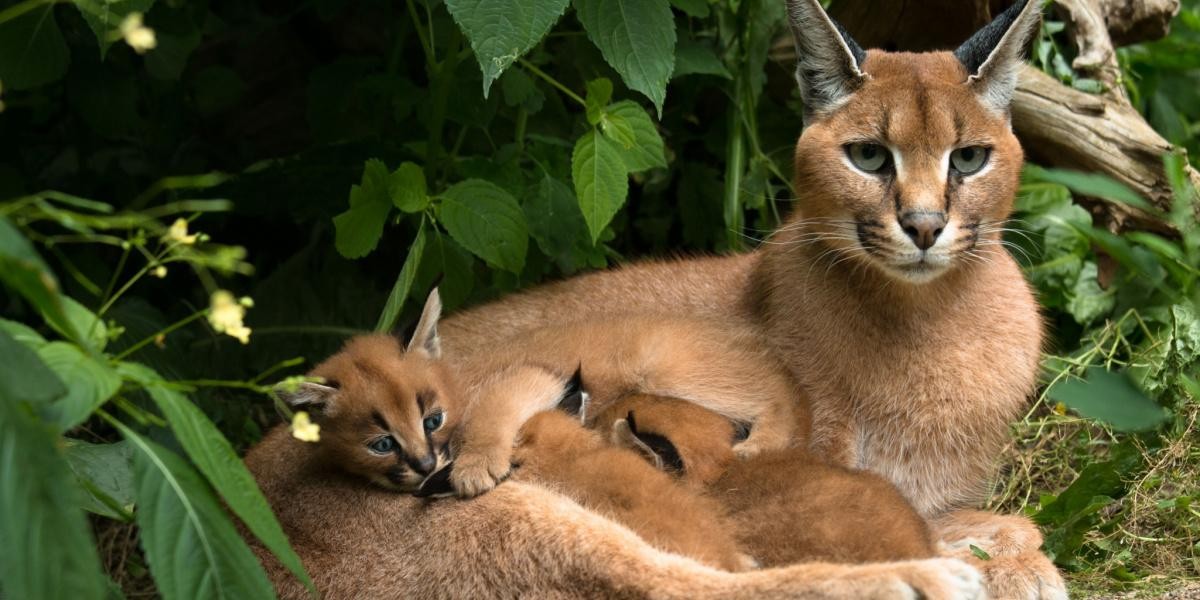
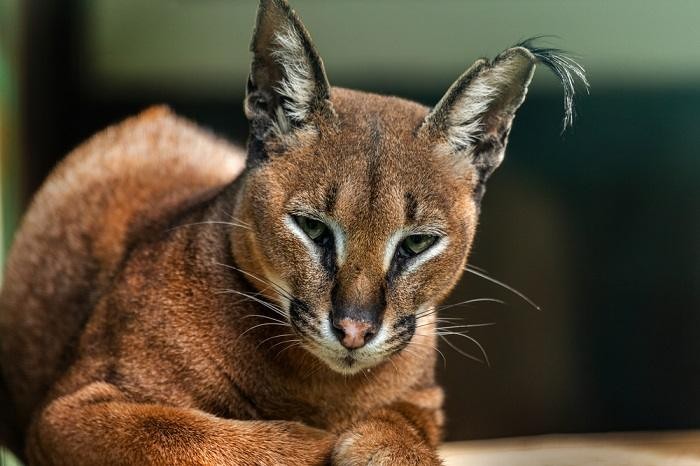
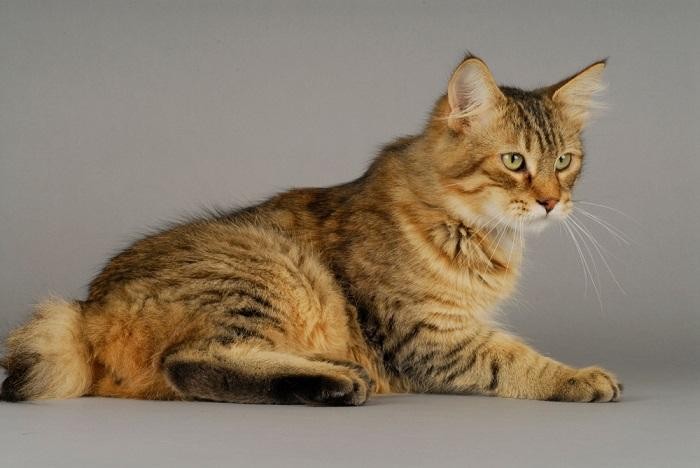
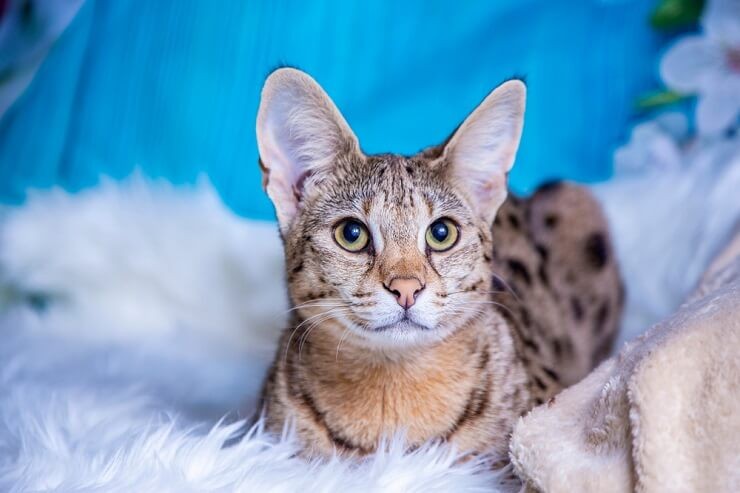
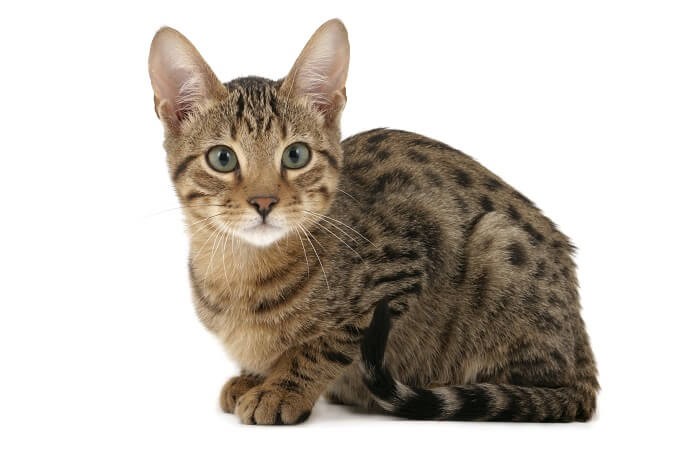
6. Alternatives to Caracals: Cat Breeds That Only Look Wild
If you’re drawn to the exotic look of a caracal, but recognize the importance of owning a domesticated animal, there are several cat breeds that offer a similar aesthetic without the challenges and ethical concerns.
6.1. Pixie-Bob
The Pixie-Bob is a domestic cat breed that resembles the North American bobcat. They have a muscular build, a short tail, and a spotted coat. Pixie-Bobs are known for their affectionate and loyal personalities. Despite rumors, they are not the result of breeding domestic cats with bobcats.
- Origin: United States
- Height: 10-12 inches
- Weight: 8-18 pounds
- Life Span: 13-16 years
- Price: $1800 – $3000
- Temperament: Loving, active, and social.
6.2. Chausie
The Chausie is a hybrid breed that was developed by crossing domestic cats with the jungle cat (Felis chaus). They have a slender body, long legs, and a distinctive ticked tabby coat. Chausies are active, athletic, and intelligent cats.
- Origin: Egypt, South Asia
- Height: 14-18 inches
- Weight: 12-25 pounds
- Life Span: 10-15 years
- Price: $500-$2500
- Temperament: Active, athletic, and sociable.
6.3. Savannah
The Savannah is another hybrid breed that was created by crossing domestic cats with the African serval (Leptailurus serval). Savannahs are tall, slender cats with long legs, large ears, and a spotted coat. They are known for their intelligence, curiosity, and outgoing personalities.
- Origin: United States
- Height: 10-13 inches
- Weight: 9-15 pounds
- Life Span: 12-15 years
- Price: $1,500 – $25,000 (depending on generation)
- Temperament: Curious, outgoing, and assertive.
6.4. Bengal
The Bengal is a hybrid breed that was developed by breeding domestic cats with the Asian leopard cat (Prionailurus bengalensis). Bengals have a distinctive spotted or marbled coat, a muscular build, and an energetic personality. They are known for their intelligence, curiosity, and playful nature.
- Origin: United States
- Height: 13-16 inches
- Weight: 6-15 pounds
- Life Span: 12-20 years
- Price: $1,500 – $3,000
- Temperament: Energetic, outgoing, curious, and affectionate.
6.5. Serengeti
The Serengeti was developed to resemble the African serval but contains no serval blood. The breed was created using Bengals and Oriental Shorthairs. They are spotted cats with long legs, large ears, and a slender body. Serengetis are confident, friendly, and active cats.
- Origin: United States
- Height: 8-10 inches
- Weight: 8-15 pounds
- Life Span: 8-12 years
- Price: $600 – $2,000
- Temperament: Confident, friendly, and active.
6.6. Toyger
The Toyger was developed to resemble a miniature tiger. They have a striped coat, a muscular build, and a docile personality. Toygers are known for their intelligence, sociability, and affectionate nature.
- Origin: United States
- Height: 8-10 inches
- Weight: 7-15 pounds
- Life Span: 12-15 years
- Price: $1200 – $3000
- Temperament: Docile, smart, and very friendly.
7. Expert Opinions: The Verdict on Caracals as Pets
Wildlife experts overwhelmingly advise against keeping caracals as pets. Organizations like the Humane Society and the World Wildlife Fund emphasize that wild animals belong in their natural habitats. Confining them to a domestic environment not only compromises their well-being but also poses risks to humans and other animals.
Veterinarians specializing in exotic animals also caution against owning caracals. They highlight the challenges of providing proper care, including specialized diets, enclosures, and veterinary treatment.
8. The Cost of Owning a Caracal: More Than Just a Price Tag
The financial implications of owning a caracal extend far beyond the initial purchase price. Here’s a breakdown of the potential costs:
| Expense | Estimated Cost | Description |
|---|---|---|
| Purchase Price | $7,000 – $30,000+ | The cost of buying a caracal kitten from a breeder. |
| Enclosure | $5,000 – $20,000+ | Building a secure, spacious enclosure that meets the caracal’s needs. |
| Diet | $500 – $1,000+ per month | Providing a high-quality, specialized diet that includes raw meat and supplements. |
| Veterinary Care | $500 – $2,000+ per year | Vaccinations, parasite control, and treatment for injuries and illnesses. |
| Insurance | $500 – $1,500+ per year | Liability insurance to cover potential injuries or damages caused by the caracal. |
| Permits and Licenses | $50 – $500+ per year | Fees for obtaining and renewing permits and licenses required by your state or local government. |
| Total Estimated Cost | $13,550 – $53,000+ (Year 1) | This is a rough estimate and the actual cost may vary depending on your location, the caracal’s individual needs, and other factors. |
These costs do not include potential expenses such as property damage, legal fees, or medical bills resulting from injuries caused by the caracal.
9. Conservation Efforts: Protecting Caracals in the Wild
Instead of keeping caracals as pets, consider supporting conservation efforts that protect these animals in their natural habitat. Organizations like the Wildlife Conservation Society and Panthera are working to conserve caracal populations and their ecosystems. By donating to these organizations, you can help ensure that caracals continue to thrive in the wild.
10. Frequently Asked Questions About Caracals
10.1. Are caracals friendly to humans?
Caracals are wild animals and are not inclined to be friendly toward humans. In the wild, caracals are solitary animals that prefer to live alone. Even caracal kittens bred to be sold as pets still have wild instincts, including an aversion to humans.
10.2. Is a caracal cat aggressive?
Caracals, even those bred to be sold as pets, retain their wild instincts. They can be aggressive toward humans and other animals like pet cats and dogs. Although caracals raised from kittens might learn to live with humans, these are still wild felines and can be extremely unpredictable, even dangerous.
Like housecats, caracals will make sounds that warn of impending aggression, including growls and hisses. Attempting to tame a caracal found in the wild is not recommended by wildlife experts.
10.3. Can a caracal hurt you?
Caracals are small, so caracal attacks on humans are rare, however they do happen on occasion, especially when people keep these exotic animals as pets. Any wild animal, including caracals, can be dangerous if cornered. Caracals are more likely to hurt children and the elderly, and can injure or even kill other pets like cats and dogs.
10.4. How much does a caracal cost?
Breeders raise and sell caracals as pets, and they can cost exorbitant amounts. Wildlife experts strongly warn against keeping caracals as pets, even if it is legal to do so in your state.
10.5. What do caracals eat?
Caracals are carnivores and their diet primarily consists of meat. In the wild, they hunt small mammals, birds, rodents, and occasionally larger prey like small antelopes. As pets, their diet would need to be carefully managed to mimic their natural food sources, often involving specialized raw meat diets.
10.6. Are caracals legal to own?
The legality of owning a caracal varies by location. Some states or countries may allow it with a permit, while others outright ban it. It’s essential to check local regulations before considering owning one.
10.7. How big do caracals get?
Caracals are medium-sized cats, typically weighing between 20 to 40 pounds (9 to 18 kilograms) and standing about 16 to 20 inches (40 to 50 centimeters) tall at the shoulder.
10.8. Do caracals make good pets for families with children?
Caracals are generally not recommended as pets for families with children due to their wild instincts and potential for aggression. Even when raised in captivity, they can be unpredictable and may pose a safety risk, particularly to young children.
10.9. How long do caracals live?
In the wild, caracals typically live for about 12 years. In captivity, they can live longer, sometimes up to 17 years or more, provided they receive proper care and nutrition.
10.10. Can caracals be litter-trained?
While caracals can be trained to use a litter box, their urine marking behavior is deeply ingrained, making it challenging to fully eliminate spraying in a domestic setting.
Conclusion: Choose Wisely, Choose Responsibly
While the idea of owning a caracal may seem exciting, it is essential to consider the ethical, practical, and legal implications. Caracals are wild animals that belong in their natural habitat. They require specialized care that is difficult and expensive to provide, and they can pose a risk to public safety.
Instead of keeping a caracal as a pet, consider supporting conservation efforts that protect these animals in the wild. If you’re looking for a feline companion with a similar appearance, explore the many domesticated cat breeds that offer the beauty of a wild cat without the challenges and ethical concerns.
At PETS.EDU.VN, we are committed to providing you with the information you need to make responsible and informed decisions about pet ownership. Visit our website to learn more about domesticated cat breeds, ethical pet ownership, and conservation efforts. Our team of experts can help you find the perfect feline companion for your lifestyle and values.
Contact us:
- Address: 789 Paw Lane, Petville, CA 91234, United States
- Whatsapp: +1 555-987-6543
- Website: pets.edu.vn
Remember, choosing a pet is a lifelong commitment. Make sure you choose wisely and responsibly.

